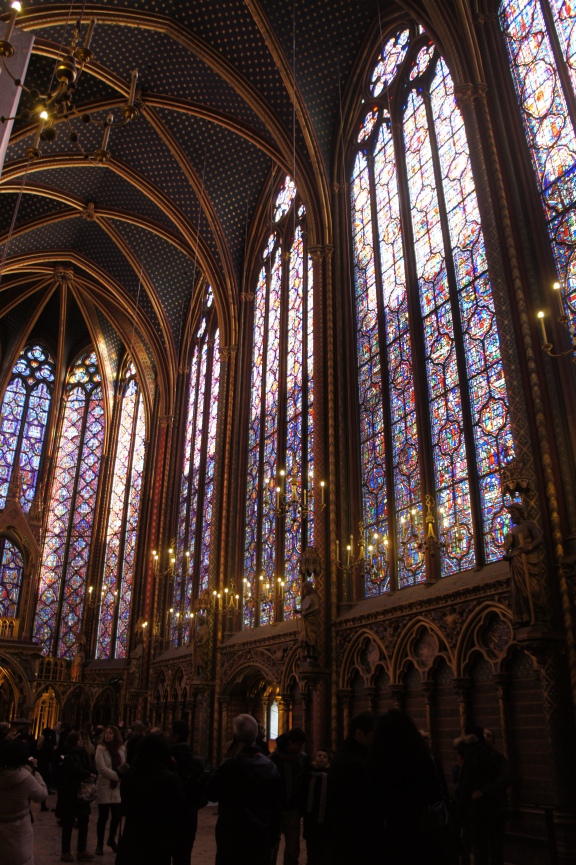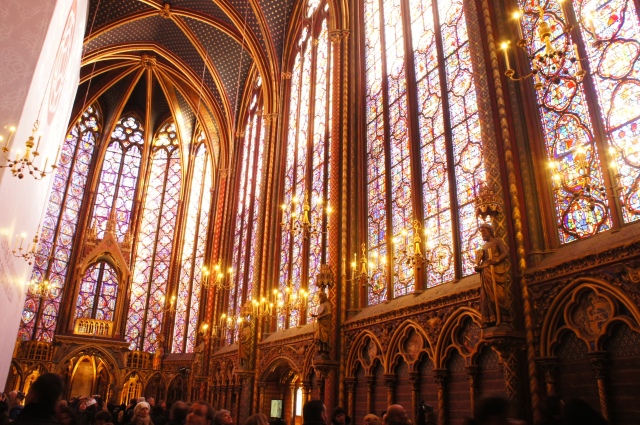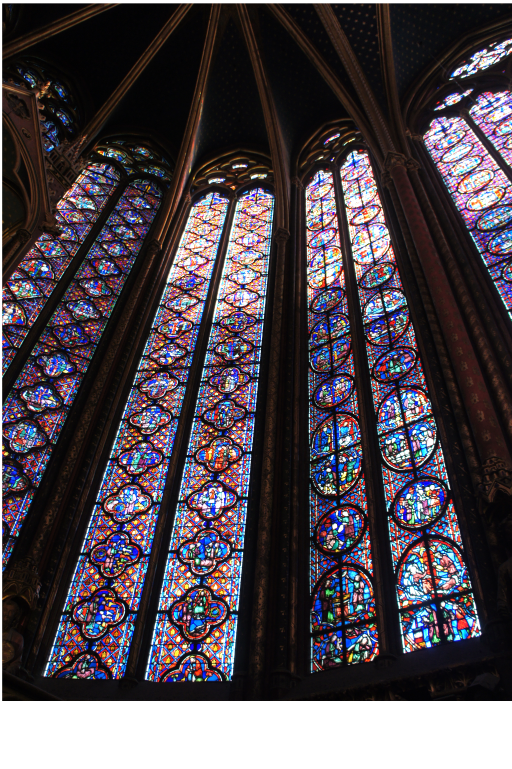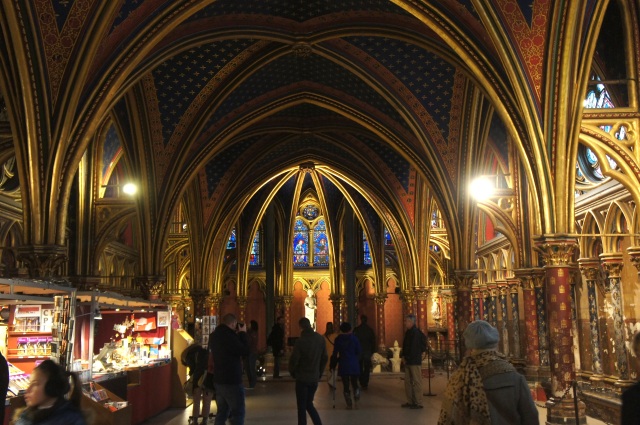While riding the train to Paris Friday night, I was reading The Hunchback of Notre Dame by Victor Hugo when I read a passage that I found so thought provoking I had to share it. Hugo is discussing architecture, in particular that of the Middle Ages. (Emphasis is mine.)
“(F)rom the origin of things down to and including the fifteenth century of the Christian era, architecture is the great book of humanity, the principal expression of man in his various stages of development…
Architecture began like all writing. It was at first the alphabet. A stone was placed upright, it was a letter, and each letter was a hieroglyph and upon each hieroglyph reposed a group of ides…
Later on they made words; they placed stone upon stone, they coupled these syllables of granite…
Finally men made books…
Architecture then developed with the human thought, it became a giant with a thousand heads and a thousand arms, and fixed all that floating symbolism in an eternal, visible, palpable form.
…Thus during the first six thousand years of the world…architecture has been the great handwriting of humankind…all human thought has its page and its monument in this immense book.”
Hugo then goes on to explain the importance of the architecture of cathedrals and churches in Medieval Europe:
“This was the only freedom of expression at that period; it could inscribe itself within those books which we call edifices, freedom of thought would have been burned in the public place by the hand of the executioner in the form of manuscript, had it been so imprudent as to choose that form of expression… Thus having alone in masonry a channel of expression, it left no opportunity neglected. Hence the immense number of cathedrals which covered Europe – a number so prodigious as to seem almost incredible… All the material forces, all the intellectual forces, converged towards the same point, architecture. In this manner, under the pretext of building churches to God, art developed in magnificent proportions.
Then, whosoever was born poet became architect. Genius, scattered through the masses, compressed on all sides by feudalism…found its only issue through the medium of architecture, burst forth through this art, and its Iliad took the form of cathedrals.”
It was with this lofty thought in mind that I first visited Sainte Chapelle. Along with the Conciergerie, Sainte Chapelle (Holy Chapel) is the only building remaining of the original royal palaces on Ile de la Cite in the middle of the Seine.
If we are to keep with the theme of Victor Hugo’s allegory, then Sainte Chapelle is the purest and most elegant of poetry, the most delicate of handwriting.
 I loved the passage from Hugo because it puts into words what I have felt for a long time, but was not able to express so intelligently. The Middle Ages has a reputation as a time of darkness and ignorance, when nothing of worth was created and people were not as intelligent as the philosophers of antiquity or, of course, as we are today. However, all it takes is one step inside a Medieval cathedral to see that this is not at all true! No matter how many times I see the vaulted ceiling of a Gothic cathedral, I’m amazed at the genius of engineering behind it.
I loved the passage from Hugo because it puts into words what I have felt for a long time, but was not able to express so intelligently. The Middle Ages has a reputation as a time of darkness and ignorance, when nothing of worth was created and people were not as intelligent as the philosophers of antiquity or, of course, as we are today. However, all it takes is one step inside a Medieval cathedral to see that this is not at all true! No matter how many times I see the vaulted ceiling of a Gothic cathedral, I’m amazed at the genius of engineering behind it.
 Sainte Chapelle was built in the 1200’s, a time most people would consider “dark”. Yet there is nothing dark about this beautiful chapel. It clearly reflects the grandiose ideals and noble emotions of its creators.
Sainte Chapelle was built in the 1200’s, a time most people would consider “dark”. Yet there is nothing dark about this beautiful chapel. It clearly reflects the grandiose ideals and noble emotions of its creators.
Hugo continues in that chapter to say that the invention of the printing press “killed” architecture, because with its invention mankind turned the full force of its ideas and creativity into writing, as books were faster and cheaper to make and could easily be dispersed. There is some merit to this theory. Clearly modern architecture produces wonders, however we no longer create buildings like those of the Middle Ages. And I for one lament that.






So amazing. I cant believe how old it is. I never thought about Hugo’s theory before, but I could totally see how it could be true along with other reasons that came along with the printing press like democratic systems.
I know I was so amazed at the precision it took to put so much stained glass together and then raise the whole window up without breaking it, and such a long time ago!
Well Emily, we must be on the same wavelength. I was reading “The Hunchback of Notre Dame” last night! I didn’t know it was published in France in 1831 under the title “Notre Dame de Paris” and only acquired “the Hunchback” after it was translated into English in 1833. I also didn’t realize Hugo wrote it to make people aware of the need to preserve the great cathedral of medieval Paris. Your comments make me understand why he felt such a need to do this.
When we went by Saint Chapelle, the line to get in was quite long. We skipped it and went on to Notre Dame. Now I wish we had waited…WOW!
No way! I’m a little half way over, did you just start?
Also Sainte Chapelle is in the process of a 5 year renovation, when we went the whole left side was covered up. It’s schedule to be finished next year though. So perhaps it’s good you didn’t see it, the next time you go back you can see it in all its glory!
yet again, a beautiful and insightful post my dear…
Thank you, I will try and keep them coming!
Pingback: Literary Pilgrimage | Life in La Ville Rose
Amazing architecture. Thanks for sharing your trip!
Thank you!
Sainte Chapelle is incredible. And your photos really capture it well. From looking through your blog, I’d say that you managed to take maximum advantage of your time abroad.
Thank you, and yes I certainly tried to!